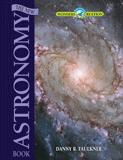
The Demise of Planet WASP-18b
LiveScience: “Newfound Planet Might Be Near Death” A recently discovered exoplanet may have been found just in the nick of time—in time for us to witness its demise, that is.
We’ve reported previously on WASP-12b and WASP-17b, two of the nearly twenty planets discovered by the UK SuperWASP team. (“WASP” stands for “wide-angle search for planets.”) But it’s planet WASP-18b that made headlines this week.
WASP-18b is so close to its star that it takes only 94 percent of an Earth day to complete an orbit.
The newly discovered WASP-18b belongs to a class of exoplanets known colloquially as “hot Jupiters”—extremely large planets (WASP-18b is ten times the mass of Jupiter) that orbit extremely close to their stars. WASP-18b is so close to its star that it takes only 94 percent of an Earth day to complete an orbit. (By contrast, Mercury’s relatively short orbital period is nearly 88 Earth days.)
Because of the gravitational pull the star exerts, astrophysicists believe WASP-18b is on a collision course with the star it orbits. But that raises a question: how is it that we found the planet so close to its demise? As LiveScience’s Andrea Thompson puts it, “While planets spend most of their lives sort of growing up, they perish in a cosmic blink of the eye. And so there is only a small time window where a planet would be in this position of impending demise—it would be statistically more likely to have found it much earlier in its lifetime, or after its destruction (which means it wouldn’t have been seen at all).”
University of Maryland–College Park astronomer Douglas Hamilton said the same: “Either the odds of finding it are really small, and we just got lucky”—or astrophysicists are misunderstanding the full nature of the gravitational interactions between planets and stars. However, that understanding is partially based on evolutionary models of the origin of solar systems. Also, billions-of-years dogma dictates that a “cosmic blink of the eye” may actually be thousands or millions of years.
Regardless, astronomers are eager to keep a close eye on WASP-18b for changes in its orbit. It could be that astrophysicists are mistaken and that we don’t fully understand the true nature of physical forces in orbital contexts. Or it could be that WASP-18b is indeed on a collision course, perhaps heading toward impact even sooner than scientists guess. If that is the case, we will again have to revisit the issue of whether it was merely a one-in-a-2,000 chance (as The Independent reported) that we observed the planet so near its demise, or whether perhaps evolutionary timetables fail to predict the actual speed of events in the universe.
For more information:
Remember, if you see a news story that might merit some attention, let us know about it! (Note: if the story originates from the Associated Press, Fox News, MSNBC, the New York Times, or another major national media outlet, we will most likely have already heard about it.) And thanks to all of our readers who have submitted great news tips to us.
(Please note that links will take you directly to the source. Answers in Genesis is not responsible for content on the websites to which we refer. For more information, please see our Privacy Policy.)
Recommended Resources

Answers in Genesis is an apologetics ministry, dedicated to helping Christians defend their faith and proclaim the good news of Jesus Christ.
- Customer Service 800.778.3390
- © 2024 Answers in Genesis







